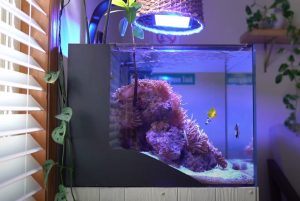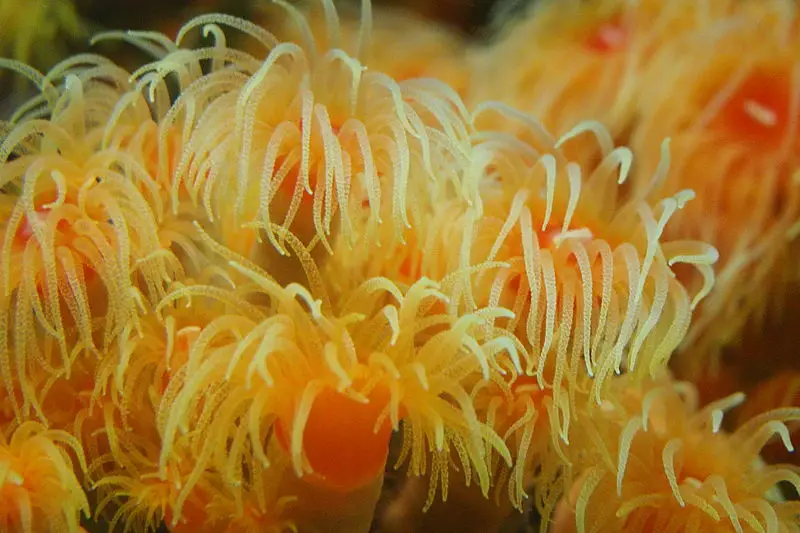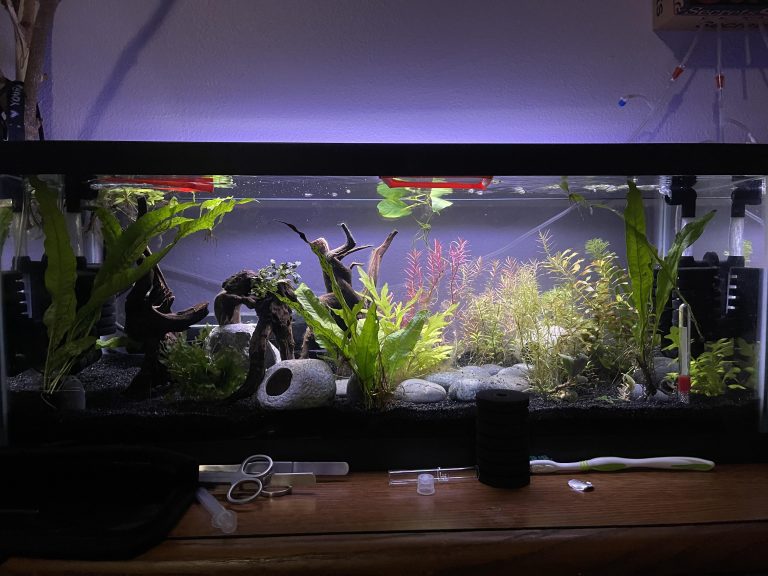Why Is My Sea Anemone Shrinking
Why is My Sea Anemone Shrinking?
Sea anemones are fascinating creatures that can add beauty and diversity to an aquarium or marine habitat. However, if you’ve noticed that your sea anemone is shrinking, it is important to understand the reasons behind this phenomenon. In this article, we will explore the potential causes of sea anemone shrinkage and discuss how to address this issue.
Understanding Sea Anemones
Before delving into the causes of sea anemone shrinkage, let’s first understand these unique organisms. Sea anemones are marine invertebrates that belong to the same family as corals and jellyfish. They have column-like bodies with tentacles that surround their central mouth, which they use to capture and consume prey.
Sea anemones are known for their symbiotic relationship with clownfish. They provide a safe home for the clownfish, while the clownfish offer protection in return. This mutually beneficial relationship has captured the imagination of many due to its depiction in movies like “Finding Nemo.”
Causes of Sea Anemone Shrinkage
Now that we have a basic understanding of sea anemones, let’s explore some possible reasons why your sea anemone may be shrinking:
1. Poor Water Quality:
Sea anemones are sensitive to changes in water quality, including temperature, salinity, pH level, and pollution. Poor water conditions can stress sea anemones, leading to shrinking and even death. It is essential to maintain proper water parameters and regularly test your aquarium’s water quality to ensure a suitable environment for your sea anemone.
2. Inadequate Lighting:
Another factor that can negatively impact sea anemones is inadequate lighting. Sea anemones rely on photosynthesis to obtain some of their nutrients and energy. Without sufficient light, they may not receive the necessary nutrients, causing them to shrink and weaken.
3. Lack of Food:
Sea anemones feed on a variety of prey, including small fish, shrimp, and plankton. If your sea anemone is not receiving an adequate supply of food, its health may deteriorate, leading to shrinkage. Ensure that you are providing a balanced diet for your sea anemone and regularly monitor its feeding habits.

4. Predation or Aggression:
Sea anemones can fall prey to certain fish or invertebrates. Some animals may nip at the tentacles of the sea anemone, causing damage and shrinkage. Additionally, aggressive tank mates may stress the sea anemone, leading to the same result. It is crucial to choose compatible tank mates and observe their behavior to prevent any harm to the sea anemone.
5. Disease or Parasites:
Like any living organism, sea anemones are susceptible to diseases and parasites. Bacterial infections, viral outbreaks, and parasitic infestations can weaken the sea anemone and contribute to its shrinkage. Proper hygiene, quarantine procedures, and regular observation can help prevent and detect such issues early on.
Addressing Sea Anemone Shrinkage
If you notice that your sea anemone is shrinking, here are some steps you can take to address the issue:
1. Assess Water Parameters:
Start by assessing the water parameters in your aquarium. Ensure that the temperature, salinity, pH level, and other essential parameters are within the acceptable range for sea anemones. Make necessary adjustments if needed to provide a stable and suitable environment.
2. Optimize Lighting:
Evaluate the lighting in your aquarium and make sure it is adequate for the specific needs of sea anemones. Consider using reef-specific lighting systems that provide the correct spectrum and intensity of light. It is also essential to provide a regular day-night cycle to simulate their natural habitat.
3. Improve Feeding Regime:
Review your sea anemone’s feeding habits and adjust the diet accordingly. Provide a variety of foods to ensure a balanced and nutritious diet. Consider supplementing their diet with specialized marine invertebrate food and live prey if appropriate.
4. Evaluate Tank Mates:
If predation or aggression from tank mates is suspected, research suitable companions for your sea anemone and ensure compatibility. Observing their behaviors closely can identify any potential issues early on.
5. Quarantine and Treatment:
If you suspect disease or parasite infestation, isolate the affected sea anemone in a quarantine tank and seek guidance from a marine veterinarian or experienced aquarist. They can provide proper diagnosis and guide you in the appropriate treatment approach.
Frequently Asked Questions
1. Can sea anemones grow back if they shrink?
Yes, sea anemones have the ability to regenerate and grow back if they shrink. However, the underlying cause of the shrinkage must be addressed for the regeneration process to be successful.
2. How long does it take for a shrinking sea anemone to recover?
The recovery time for a shrinking sea anemone can vary depending on the cause and severity of the issue. Some sea anemones may show signs of improvement within a few days, while others may take weeks or even months to recover fully.
3. Can stress cause a sea anemone to shrink?
Yes, stress can contribute to sea anemone shrinkage. Environmental stressors such as poor water quality, inadequate lighting, and aggression from tank mates can all cause stress and lead to the shrinking of sea anemones.
Final Thoughts
Sea anemone shrinkage can be a worrisome issue for aquarium enthusiasts. By understanding the potential causes and implementing appropriate measures, you can help your sea anemones thrive in their aquatic environment. Regular monitoring, proper care, and a suitable habitat will significantly increase the chances of maintaining healthy and vibrant sea anemones in captivity.






